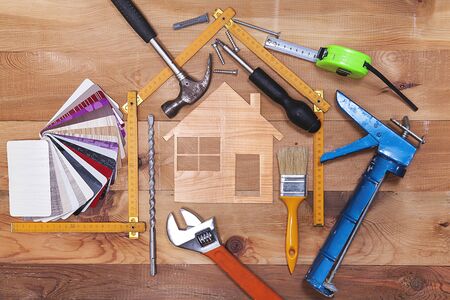1. Overpersonalizing the Space
When staging a home for sale in the U.S. market, its important to create a neutral, welcoming environment that appeals to as many potential buyers as possible. One of the most common mistakes sellers make is overpersonalizing the space. While your family photos, sports memorabilia, or unique art pieces may be meaningful to you, they can actually make it harder for buyers to see themselves living in the home.
Why Overpersonalization Hurts Your Sale
Buyers want to envision their own life in a new home. When a space is filled with personal items, it can feel like someone elses house—which makes it harder for them to connect emotionally. This disconnection can reduce interest or even lead to lower offers.
Common Overpersonalization Items to Avoid
| Item | Why It’s a Problem |
|---|---|
| Family Photos | Makes it obvious who lives there, which distracts from the buyers imagination. |
| Bold or Unusual Artwork | Might not match everyone’s taste and could clash with neutral decor. |
| Niche Collections (e.g., figurines, sports trophies) | Takes attention away from the home’s features and feels cluttered. |
What You Should Do Instead
- Replace personal photos with neutral artwork or mirrors.
- Select simple, tasteful decor that complements the space but doesn’t dominate it.
- Clear off surfaces like mantels and countertops to keep the look clean and spacious.
The goal is to allow buyers to mentally move into your home from the moment they step inside. A more neutral and depersonalized space helps them do just that.
2. Neglecting Curb Appeal
First impressions matter in the U.S. housing market. Potential buyers often form an opinion about a home before they even walk through the front door. Thats why curb appeal—the way your home looks from the street—is a critical part of home staging. Ignoring it can be a costly mistake.
Why Curb Appeal Is So Important
In many American neighborhoods, buyers drive by homes before scheduling a showing. If your homes exterior looks neglected or uninviting, they may never make it to the front step. A poorly maintained yard, faded paint, or cluttered porch can instantly turn off prospective buyers and reduce the perceived value of your property.
Common Exterior Issues That Drive Buyers Away
| Problem | Impact on Buyers |
|---|---|
| Overgrown lawn or weeds | Makes the home feel uncared for |
| Peeling paint or dirty siding | Gives an impression of poor maintenance |
| Cluttered porch or entryway | Feels unwelcoming and cramped |
| Broken light fixtures or house numbers | Sends a message that details are overlooked |
Simple Ways to Boost Your Home’s Curb Appeal
You don’t need to spend a fortune to make your exterior more appealing. Here are some budget-friendly tips that can make a big difference:
- Mow the lawn and trim bushes regularly
- Add fresh mulch to garden beds
- Power wash sidewalks and driveways
- Paint or clean the front door for a fresh look
- Replace outdated light fixtures with modern ones
- Add potted plants near the entrance for color and charm
A Small Investment Goes a Long Way
A tidy, well-maintained exterior creates a welcoming first impression that encourages buyers to take the next step—walking inside. Remember, in the competitive U.S. real estate market, small exterior improvements can lead to faster sales and better offers.

3. Using Outdated or Worn Furniture
When staging your home for the U.S. real estate market, using old, mismatched, or visibly worn furniture can instantly make your space feel dated. Buyers are quick to notice these details, and it may give them the impression that the home hasn’t been well-maintained. This can lower your homes perceived value and potentially reduce the number of serious offers you receive.
Why Furniture Matters in Home Staging
Furniture plays a key role in helping potential buyers visualize how they might live in a space. The right pieces can highlight a rooms best features, while outdated or damaged furniture can distract from them. In today’s competitive housing market, first impressions matter more than ever.
Common Furniture Mistakes
| Mistake | Impact on Buyers |
|---|---|
| Worn-out sofas or chairs | Makes the home feel neglected and less inviting |
| Mismatched furniture sets | Disrupts visual flow and makes spaces feel cluttered |
| Outdated styles (e.g., bulky 90s-era entertainment centers) | Can make rooms look smaller and less modern |
| Overly personalized decor or bold patterns | Makes it harder for buyers to envision themselves in the space |
What to Use Instead
Choose clean-lined, neutral-toned furniture that appeals to a broad audience. You don’t need to buy all new items—renting modern furniture from a staging company is often a smart investment. Keep things simple, cohesive, and minimal so that buyers focus on the home itself rather than whats inside it.
Tips for Updating Furniture Without Breaking the Bank:
- Add slipcovers to worn couches or chairs for a fresh look.
- Rearrange furniture to improve flow and highlight focal points like fireplaces or large windows.
- Use throw pillows and blankets in neutral colors to add warmth and texture.
- If renting isn’t an option, borrow stylish pieces from friends or family temporarily.
A well-staged home with updated furnishings not only photographs better but also creates a welcoming atmosphere during showings. This small change can make a big difference when selling in the U.S. market.
4. Overdoing or Underdoing Decor
When staging a home for sale in the U.S. market, finding the right balance in decor is crucial. A space that lacks decoration can feel cold, impersonal, and uninviting to potential buyers. On the other hand, an overly decorated home can appear cluttered, making it hard for buyers to imagine themselves living there.
The goal is to create a warm and welcoming atmosphere while still keeping the space neutral enough for buyers to envision their own belongings in it. A clean, minimalist approach works best—highlighting the home’s architectural features and maximizing space without overwhelming it.
Common Signs Youre Overdoing It
- Too many personal items like family photos or collectibles on display
- Heavy use of bold colors or patterns in furniture and accessories
- Every surface is filled with decor pieces
Common Signs Youre Underdoing It
- Bare walls with no artwork or mirrors
- No rugs or textiles to soften the room and add warmth
- Lack of lighting accents like floor lamps or table lamps
Tips for Balanced Staging Decor
| Room | Recommended Decor Approach |
|---|---|
| Living Room | Add a couple of neutral throw pillows, a cozy blanket, and one large piece of wall art. |
| Kitchen | Display a bowl of fresh fruit or a small plant; keep counters mostly clear. |
| Bedroom | Use layered bedding with neutral tones and hang simple art above the bed. |
| Bathroom | Add fresh towels, a candle, and a small vase with greenery. |
The key takeaway: less is more, but not too little. Aim for simplicity that feels intentional. This helps create an inviting environment that appeals to the widest range of American homebuyers.
5. Ignoring Odors and Cleanliness
When it comes to home staging in the U.S. market, how a home smells and how clean it is can make or break a sale. Buyers often rely on their senses when forming first impressions. Even if your home looks perfect, unpleasant odors or visible dirt can instantly turn buyers away.
Common Sources of Bad Odors
Some smells may go unnoticed by homeowners but are immediately detected by potential buyers during showings. Here are typical odor culprits:
| Source | Type of Odor |
|---|---|
| Pets | Urine, wet fur, litter boxes |
| Smoking | Tobacco or marijuana smoke lingering in carpets and walls |
| Cooking | Strong spices, fried food, seafood |
| Mold & Mildew | Damp, musty smells from basements or bathrooms |
Cleaning Tips That Make a Difference
A deep clean is not just about tidying up—its about making every surface shine and eliminating any source of odor. Below are some essential cleaning tasks to focus on before staging your home:
- Steam-clean carpets and upholstery to remove pet and smoke odors.
- Wash windows, baseboards, and walls for a fresh look and feel.
- Clean out refrigerators, ovens, and microwaves to avoid lingering food smells.
- Launder curtains and replace air filters to keep the air fresh.
The Power of Neutral Scents
While covering up odors with air fresheners might seem like a quick fix, its better to neutralize them altogether. Many American buyers prefer light, clean scents that don’t overpower the space. Consider using:
- Baking soda to absorb smells from carpets and furniture.
- Essential oil diffusers with lavender or citrus for a subtle aroma.
- Scent-free cleaners for a truly neutral environment.
A Buyer’s Nose Knows
In the U.S., real estate agents often hear feedback like “It smelled weird” or “I couldnt get past the dog smell.” These comments can sink a showing before buyers even consider the layout or features. Thats why maintaining cleanliness and a pleasant scent is not optional—its critical for selling success.


